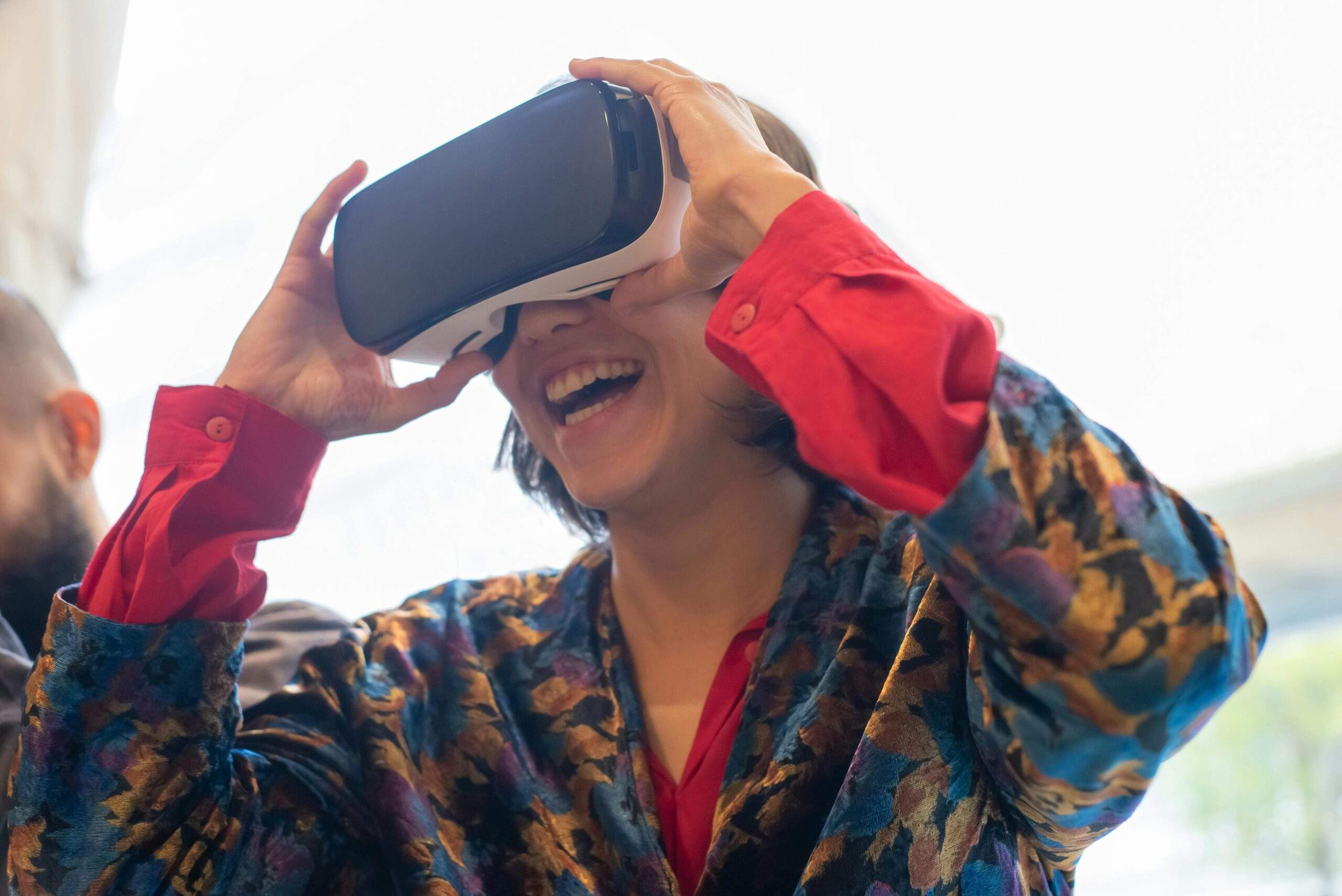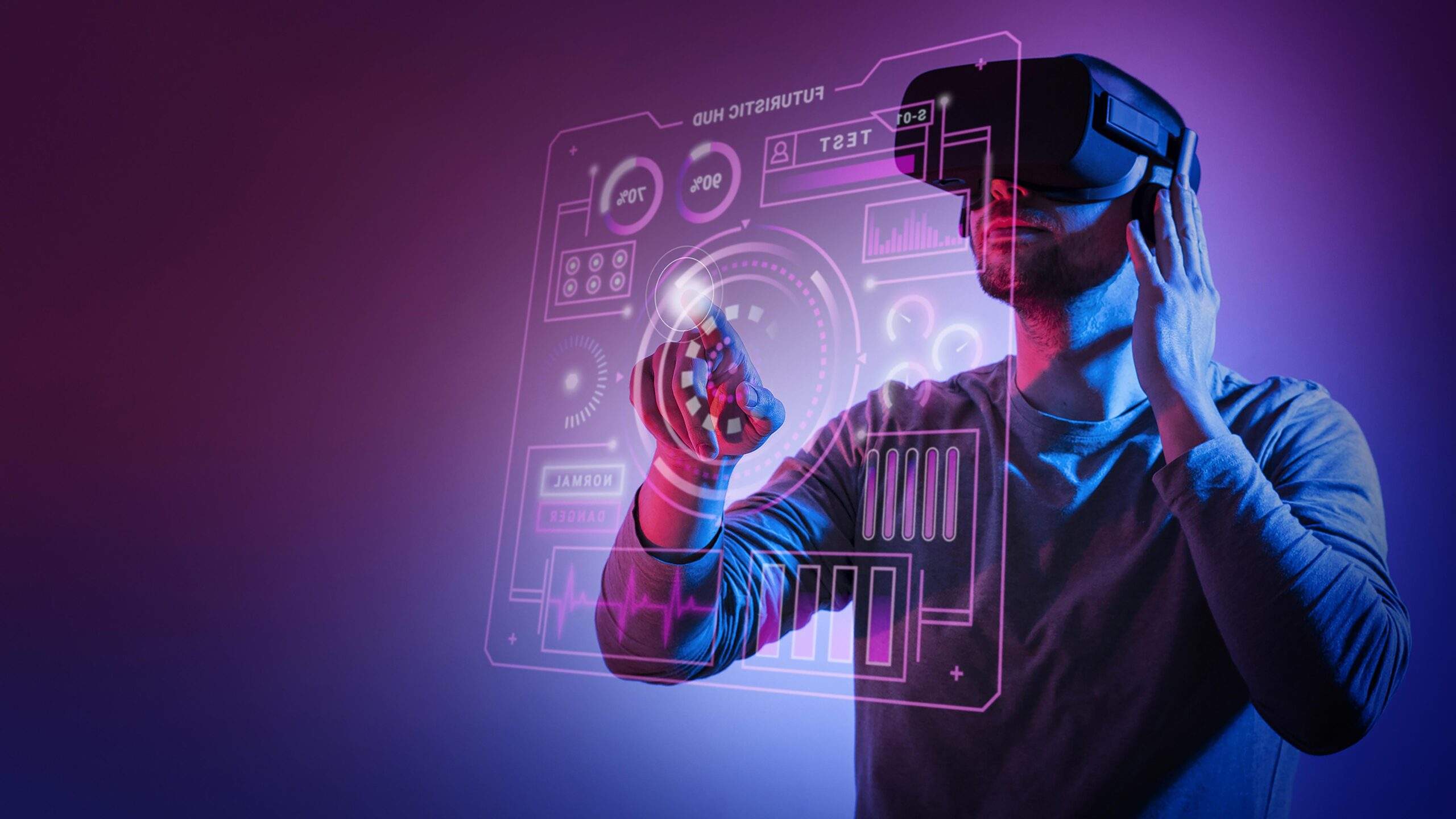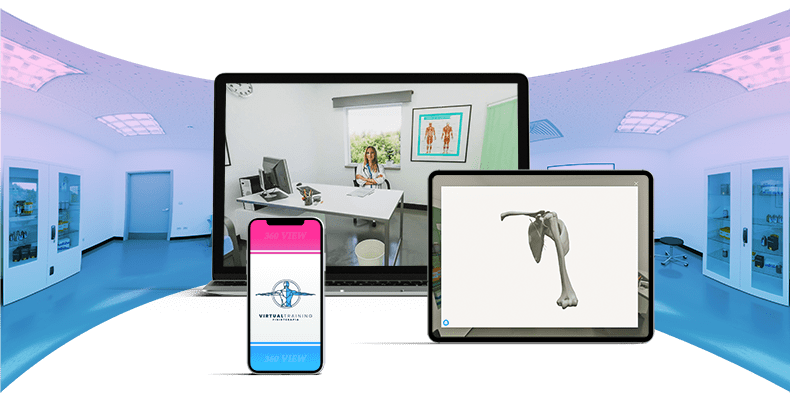In the Healthcare world the use of virtual reality (VR) and augmented reality (AR) based solutions is becoming increasingly common as these technologies can bring benefits in a wide variety of areas.
AR (augmented reality) and VR (virtual reality) are two technologies that can create immersive and engaging experiences where users can interact with virtual objects and environments in a natural and intuitive way. These technologies are increasingly used in the health and medical sector, especially for the training and education of health professionals, diagnosis and treatment of patients, pain therapy, rehabilitation and telemedicine.
In particular, the training and education sector is expected to register the highest growth, followed by rehabilitation and telemedicine.
The global VR market is expected to grow at a compound annual growth rate (CAGR) of 42.2% from 2021 to 2028, reaching a value of approximately US$57 billion by the end of the period.
The Augmented Reality market is also growing, albeit at a slower pace than VR. The global AR market is expected to grow at a CAGR of 23.3 per cent from 2021 to 2028, reaching a value of approximately $123 billion by the end of the period.
AR AND VR: THE BENEFITS IN HEALTHCARE
The entertainment and gaming industry was one of the first to embrace the large-scale use of virtual and augmented reality. Nowadays, however, the applications of these technologies have extended to many other sectors and organisations, including the healthcare sector. In this field, the use of AR and VR is particularly active and diverse, and is used for multiple purposes. These include:
-medical training: enables medical students, doctors and surgeons to improve patient care and perform complex operations without the risk of errors.
– robotic surgery: uses highly precise robotic devices, controlled by a human surgeon using AV and VR technologies.
-physical therapy: can be supported by virtual reality to help overcome high levels of pain and ensure faster recovery.
-treatment of post-traumatic stress: this consists of helping a person overcome a traumatic situation and find a way out of the crisis.
-treatment of anxiety, phobia and depression: offering patients safe environments to meditate or relax.
-personalisation of patient treatment: explaining medical procedures or steps for a more effective recovery.
-treatment of emergencies: AR maps superimposed on reality can be used to quickly find medical centres, pharmacies and other health facilities during an emergency.
-collaboration between doctors: they can work together in real time, even remotely, to address particularly complex diagnostic issues.
Examples of AR and VR application in the healthcare context
In medical education, AR and VR can be used to simulate medical procedures, allowing medical students to gain hands-on experience in a safe and controlled environment. In addition, these technologies can be used to create tutorials and interactive guides for patients and healthcare professionals.
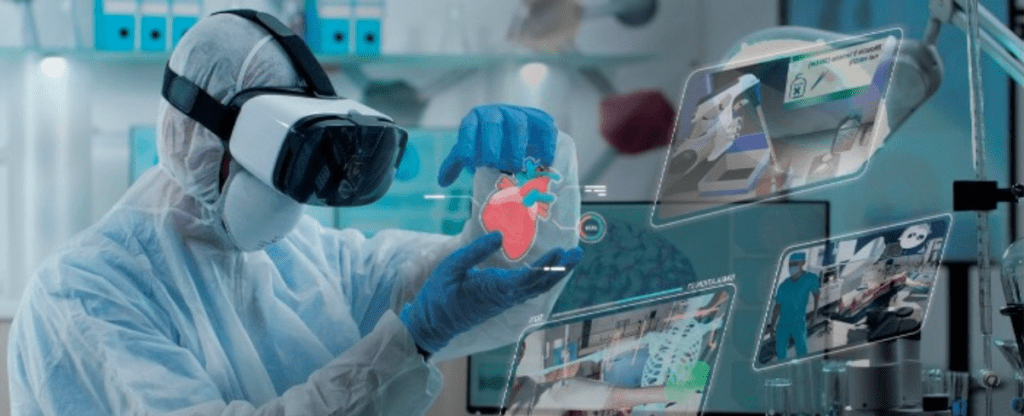
In the field of diagnosis and treatment, AR and VR can be used to visualise medical data in a more intuitive and understandable way. For example, doctors can use VR to visualise medical images such as X-rays, computed tomography scans and MRIs in real time, enabling them to detect abnormalities or pathologies more quickly and effectively.
In addition, AR and VR can be used to improve rehabilitation and therapy of patients. For example, VR can be used to create virtual environments that simulate real-life situations, allowing patients to exercise in a more engaging and motivating way. In addition, AR can be used to create educational and interactive games for patients, helping them to better manage their illnesses and acquire healthier habits.
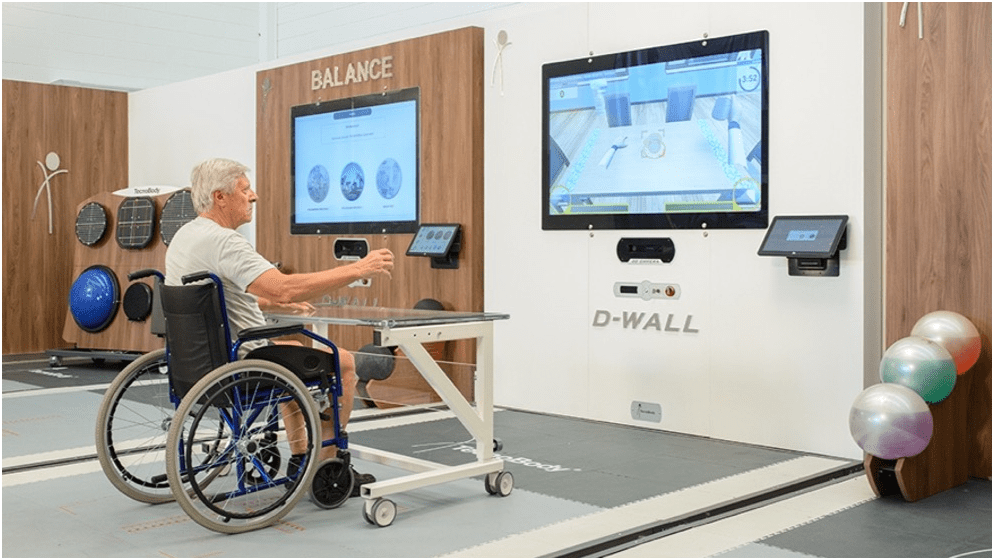
AR IN THE HEALTHCARE CONTEXT
Overlaying images in AR, set in the healthcare context, will be crucial for interactive emergency maps. Indeed, mobile apps connected to smart glasses, tablets and smartphones will help locate a nearby hospital, emergency room or pharmacy more quickly.
With immersive technologies, the doctor will be able to have a personalised approach to the patient. In fact, these solutions give him the possibility to explain in a practical and visual way to his patients:
- Modalities for performing the operation
- Post-operative steps
- Faster rehabilitation
The information that is shared using Augmented reality will be more comprehensible than with traditional communication methods. This will affect both the doctor-patient relationship and the collaboration between experts. In fact, there will be concrete interaction and support in surgical procedures as well as in the diagnosis and treatment of pathologies.
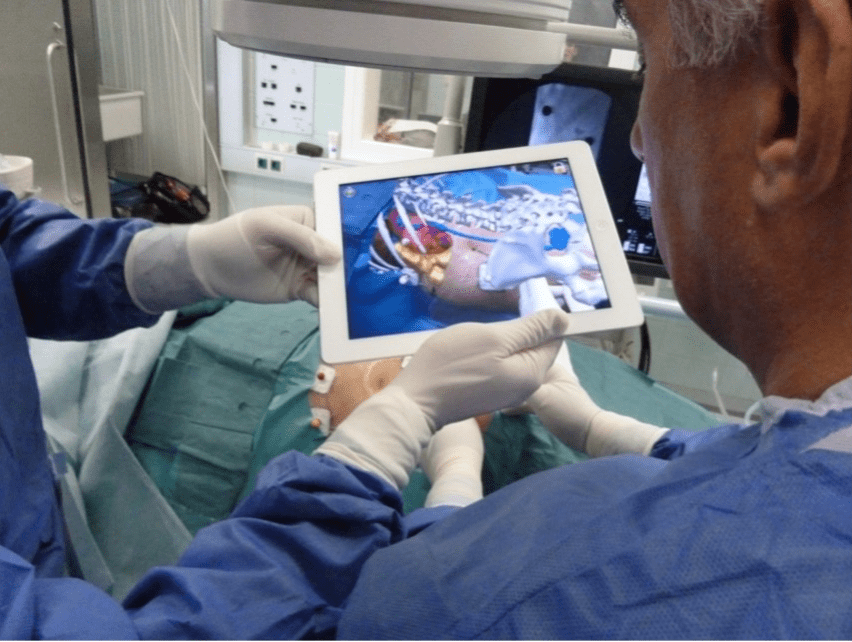
VR IN THE HEALTHCARE CONTEXT
Below are some of the most significant applications, software and solutions concerning the use of virtual reality in the healthcare context:
XRHealth: the virtual clinic that turns therapy into play
On the subject of hospital facilities, RHealth offers the XRHealth virtual reality clinic for patient therapy. The solution combines therapy software with VR technology to treat a variety of health conditions. VR therapy transports patients into an environment where they can see and experience treatment as a ‘fun activity’: the aim is to increase adherence to treatment.
Patients are provided with a VR visor, explained how to use the technology and receive continuous remote assistance and monitoring using video calling and VR technology.
SnowWorld: VR to alleviate the pain of burns
It is designed to reduce pain in severely burnt patients, suffering that is particularly pronounced during dressing changes.
The technology used is based on the fact that pain perception has a strong psychological component. An incoming pain signal to the brain can be interpreted as more or less painful, depending on what the patient is ‘thinking’.
Pain requires conscious attention. Virtual reality exploits the illusion of users entering the computer-generated environment. Being drawn into another world drains many attentional resources, leaving less attention available to process pain signals. Rather than making pain the focus of their attention, for many patients using a SnowWorld-type VR the treatment becomes more of an ‘annoyance’: they feel less pain as they are ‘distracted’ by virtual reality.
RelieVRx, an aid for chronic back pain
RelieVRx is an immersive virtual reality system based on cognitive-behavioural therapy and other behavioural methods for patients diagnosed with chronic back pain.
Basically, through a device with software content pre-loaded on a proprietary hardware platform, they are taught how to manage their pain.
For this purpose, an immersive VR system is used that provides VR content for the following activities:
- biopsychosocial pain education
- diaphragmatic breathing training
- awareness exercises
- relaxation response exercises
- executive functioning games.
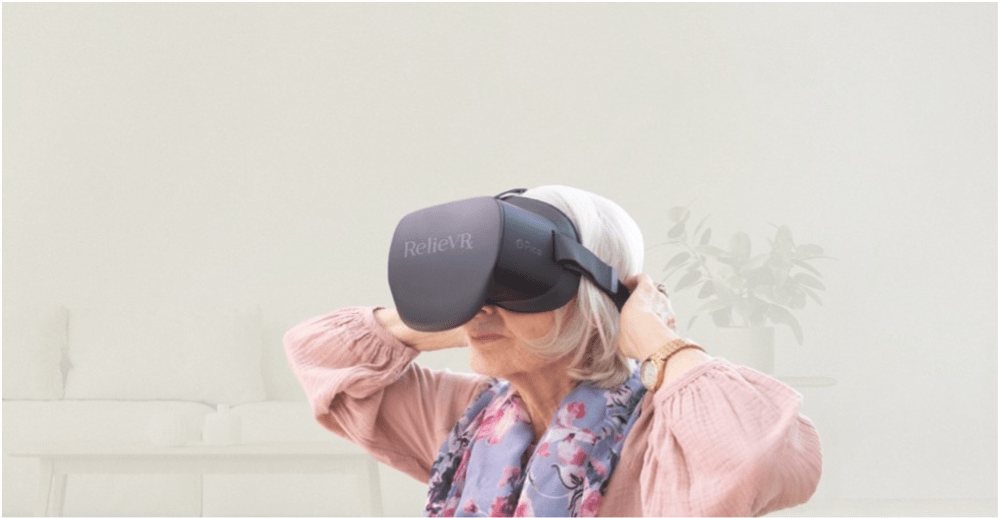
The content of the EaseVRx software includes an 8-week virtual reality-based programme that helps people reduce the extent of symptoms and the impact of pain.
Bravemind: VR for the treatment of post-traumatic stress
Bravemind is a project at the University of Southern California that uses virtual reality to provide relief from major post-traumatic stress.
In the US, ‘virtual reality exposure therapy’ (VR Exposure Therapy) has found widespread use among civilians after the events of 9/11 and among military personnel stationed in the Middle East. The application consists of a series of specific virtual scenarios designed to represent contexts relevant to therapy, such as Afghan and Iraqi cities and desert road environments. In addition to the visual stimuli presented in the display mounted on a VR helmet, directional 3D audio, vibrations and smells can also be used in the simulation.
Specialised doctors control the effect of the stimulus via a separate interface (‘Wizard of Oz’) and audio contact with patients.
TELOS, virtual reality for rehabilitation
TELOS is a project aimed at evaluating the effectiveness of virtual reality-supported rehabilitation therapy for children with infantile cerebral palsy (hemiplegic and diplegic forms).
The rehabilitation exercises are carried out in the form of a video game (serious games) and are performed in an immersive virtual reality environment to allow the children a multisensory experience where visual and auditory stimuli perceived at 360 degrees are supplemented by tactile ones perceived through wearable actuators. In this way, it is also possible to experience tactile contact with virtual objects that are the target of grasping and manipulation actions.
In conclusion, the use of virtual and augmented reality in the healthcare context offers numerous advantages, but it is important to emphasise that these technologies should not be used as a substitute for traditional medical care, but as a complement to improve the effectiveness of treatments.
At AR Market, we strongly believe in the potential of AR and VR technologies applied to healthcare education and are constantly working to formulate exciting new opportunities.
Visit our website to discover what we can achieve for your business!


